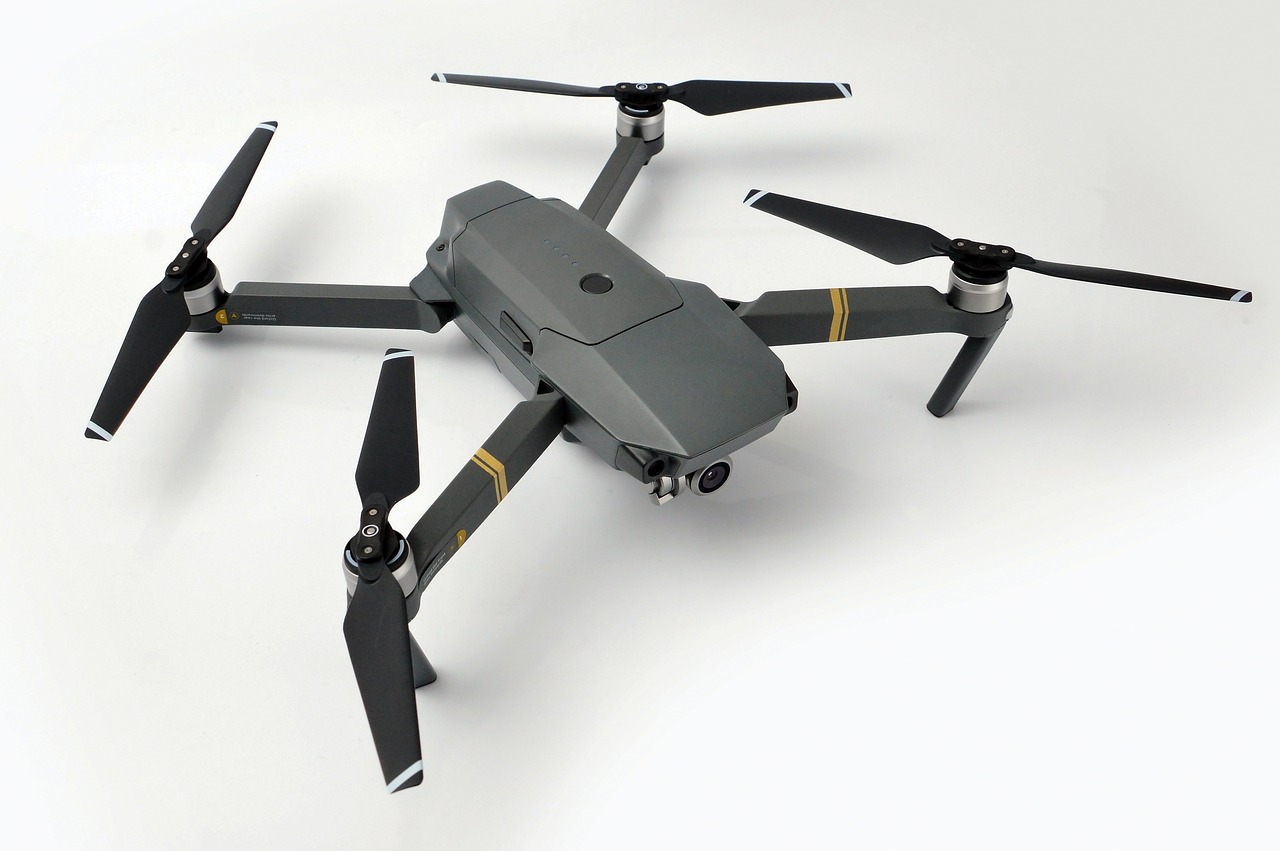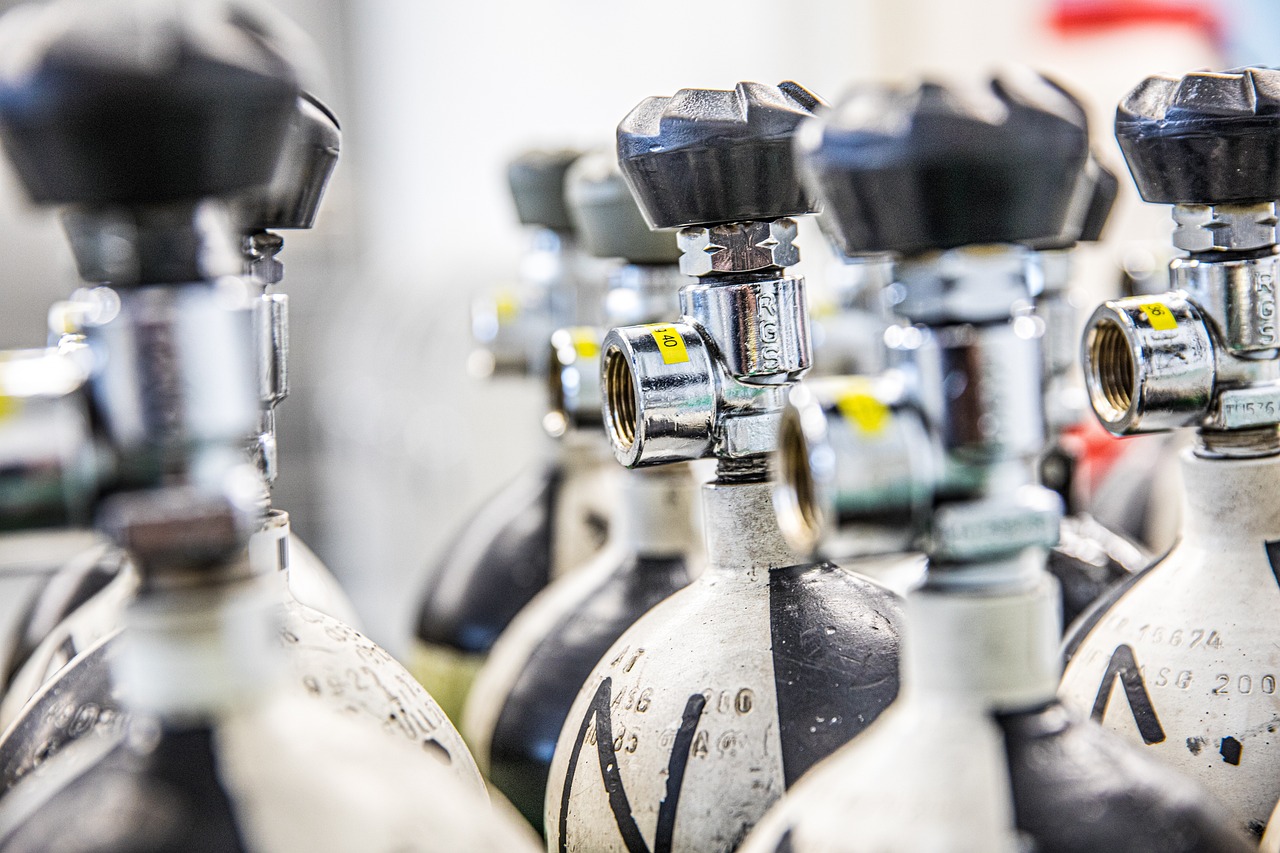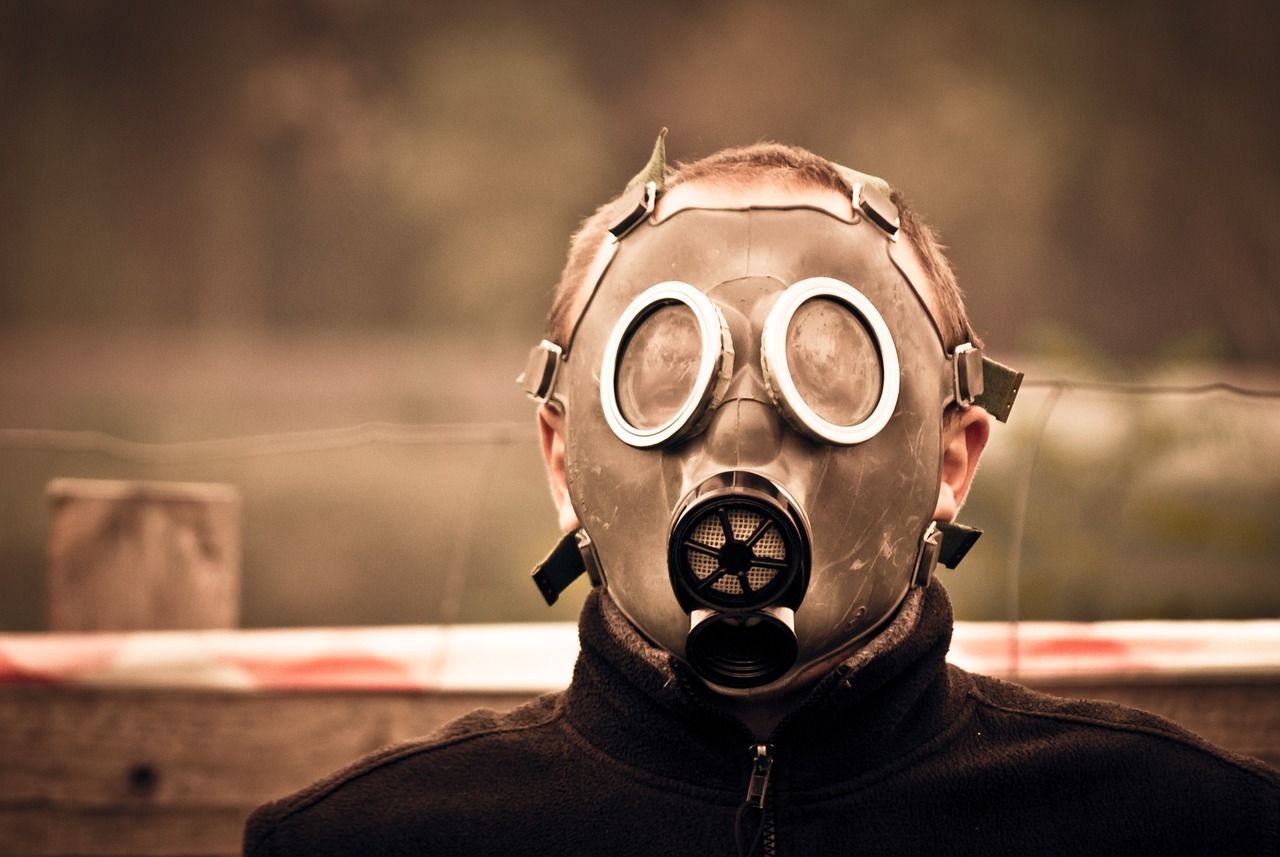Breathing and Self-Defense Techniques - Is There a Connection?
When it comes to self-defense, most people think about physical techniques, martial arts skills, or the right equipment. But have you ever considered the power of breathing? Yes, you heard that right! The way we breathe can have a profound impact on our performance in high-pressure situations. Imagine being faced with a confrontation; your heart races, your palms sweat, and your mind goes blank. Now, what if I told you that mastering your breath could be the key to maintaining control and clarity in such moments? In this article, we’ll dive deep into the fascinating relationship between breathing techniques and self-defense, uncovering how proper breathing can enhance your physical abilities and sharpen your mental focus when it matters most.
Understanding the importance of breathing in self-defense is like discovering a hidden superpower. It’s not just about staying calm; it’s about optimizing your body and mind to respond effectively when the stakes are high. Proper breathing techniques can help you maintain your focus, reduce anxiety, and improve your physical endurance during confrontations. Think of it as your personal toolkit for navigating the chaos of a potential conflict. When you can control your breath, you can control your body and, ultimately, the situation.
But what exactly are these breathing techniques that can elevate your self-defense game? This article will explore various methods, including diaphragmatic breathing and box breathing, each offering unique benefits that can enhance your ability to respond effectively in self-defense scenarios. As we delve into these techniques, you’ll learn how to not only improve your physical performance but also cultivate a mindset that empowers you to act decisively when it counts.
So, whether you’re a seasoned martial artist or just starting your self-defense journey, understanding the connection between breathing and self-defense can be a game-changer. Let’s take a closer look at the types of breathing techniques that can help you harness your inner strength and stay centered in the face of adversity.

The Importance of Breathing in Self-Defense
This article explores the relationship between breathing techniques and self-defense, examining how proper breathing can enhance physical performance and mental clarity in high-pressure situations.
When it comes to self-defense, many people think solely about physical techniques, but breathing plays a critical role that is often overlooked. Imagine being in a high-stress situation where your heart races, your palms sweat, and your mind goes blank. This is where effective breathing can be a game changer. By mastering your breath, you can maintain focus, reduce anxiety, and enhance your physical endurance. Proper breathing techniques act like a mental anchor, grounding you when everything around you feels chaotic.
In fact, the way you breathe can influence your body’s response to stress. When you breathe shallowly, your body tends to react as if it’s under threat, triggering a fight-or-flight response that can cloud your judgment. On the contrary, deep and controlled breathing can help you stay calm and collected, allowing for better decision-making during confrontations. Here are a few key reasons why breathing is so important in self-defense:
- Maintains Focus: Proper breathing helps to clear your mind, allowing you to concentrate on your surroundings and potential threats.
- Reduces Anxiety: Deep breathing techniques can lower anxiety levels, helping you to remain calm under pressure.
- Enhances Physical Endurance: Controlled breathing can improve oxygen delivery to your muscles, enabling you to perform better for longer periods.
Furthermore, understanding the physiological aspects of breathing can significantly impact your performance. When you breathe correctly, your body becomes more efficient at utilizing oxygen, which is crucial during physical exertion. This means that in a self-defense scenario, your body can sustain energy levels longer, giving you an edge over an opponent.
Moreover, proper breathing can also help regulate your heart rate. A steady heart rate means your body is not in a state of panic, which can lead to clearer thinking and more effective responses. In a self-defense situation, every second counts, and being able to think clearly can make all the difference.
In summary, the importance of breathing in self-defense cannot be overstated. It’s not just about physical strength or technique; it’s about being mentally and physically prepared. By incorporating breathing exercises into your training regimen, you can build a solid foundation that enhances your ability to respond effectively in high-pressure situations. So, the next time you think about self-defense, remember to focus on your breath—it could be your most powerful ally.
Various breathing techniques can be applied in self-defense scenarios. This section will explore diaphragmatic breathing, box breathing, and other methods that can enhance your ability to respond effectively.
Diaphragmatic breathing, or abdominal breathing, promotes relaxation and oxygen flow. This technique can help regulate heart rate and maintain calmness during stressful situations, making it essential for self-defense.
Practicing diaphragmatic breathing can improve stamina, reduce stress, and enhance mental clarity. These benefits are crucial for effective decision-making in self-defense situations.
Learning the correct way to practice diaphragmatic breathing involves specific techniques and exercises that can be easily integrated into your daily routine.
Box breathing, a method used by athletes and military personnel, helps to regain control during high-pressure situations. This technique involves inhaling, holding, exhaling, and pausing in equal counts.
Breathing techniques can significantly enhance physical performance in self-defense situations. This section discusses how proper breathing supports strength, endurance, and agility during confrontations.
Effective breathing techniques can improve oxygen delivery to muscles, enhancing endurance. This is particularly valuable in self-defense scenarios where sustained effort is required.
Proper breathing techniques can increase core stability and strength. Understanding how to breathe during physical exertion can maximize power output in self-defense movements.
Incorporating mindfulness into breathing practices can enhance focus and situational awareness. This section explores how mindfulness can improve decision-making and response time in self-defense situations.
Mindfulness techniques can help practitioners stay present, reducing panic during confrontations. This section provides practical mindfulness exercises that integrate with breathing techniques.
Breathing and mindfulness work together to improve reaction time. This section discusses how focused breathing can sharpen your reflexes and enhance your ability to respond quickly in self-defense scenarios.
Q: How can I incorporate breathing techniques into my self-defense training?
A: Start by practicing diaphragmatic and box breathing exercises before and after your training sessions to enhance focus and recovery.
Q: Can breathing techniques help in non-physical confrontations?
A: Absolutely! Breathing techniques can help manage anxiety and maintain clarity in any high-pressure situation, whether physical or verbal.
Q: How long does it take to see improvements from breathing techniques?
A: With consistent practice, many people report improvements in focus and calmness within a few weeks.

Types of Breathing Techniques
When it comes to self-defense, understanding different breathing techniques can be a game-changer. Each method has its unique benefits and applications, allowing practitioners to harness the power of breath to enhance their performance in high-pressure situations. Let's dive into some of the most effective techniques that can help you stay calm, focused, and ready to respond when it matters most.
One of the most prominent techniques is diaphragmatic breathing, also known as abdominal breathing. This technique emphasizes using the diaphragm rather than the chest for breathing, promoting deeper and more efficient oxygen intake. By practicing this method, you can lower your heart rate, reduce anxiety, and foster a sense of calmness, which is essential during confrontations. Imagine being in a heated situation, and instead of panicking, you take a deep breath that fills your abdomen, allowing you to think clearly and act decisively.
Another powerful technique is box breathing. This method is particularly popular among athletes and military personnel who need to maintain composure under pressure. Box breathing involves a simple pattern: inhale for a count of four, hold your breath for four, exhale for four, and then pause for another four counts. This rhythmic approach not only helps to stabilize your breathing but also provides a structured way to regain control when emotions run high. Think of it as a mental reset button that allows you to refocus your energy and prepare for action.
In addition to these techniques, there are other methods worth exploring, such as 4-7-8 breathing and alternate nostril breathing. The 4-7-8 technique encourages you to inhale for four seconds, hold for seven, and exhale for eight, promoting relaxation and reducing stress. On the other hand, alternate nostril breathing involves closing one nostril while inhaling through the other, then switching sides. This technique is believed to balance the body's energy and calm the mind, making it a great addition to your self-defense toolkit.
To summarize, here’s a quick look at the various breathing techniques that can enhance your self-defense skills:
| Breathing Technique | Description | Benefits |
|---|---|---|
| Diaphragmatic Breathing | Breathing using the diaphragm for deeper breaths. | Reduces anxiety, lowers heart rate, promotes calmness. |
| Box Breathing | Inhale, hold, exhale, and pause for equal counts. | Regains control, stabilizes emotions, enhances focus. |
| 4-7-8 Breathing | Inhale for 4 seconds, hold for 7, exhale for 8. | Promotes relaxation, reduces stress. |
| Alternate Nostril Breathing | Inhaling through one nostril and exhaling through the other. | Balances energy, calms the mind. |
By incorporating these breathing techniques into your self-defense training, you can significantly enhance your ability to stay calm and make quick decisions during high-stress situations. Remember, the breath is a powerful tool that can help you maintain clarity and focus when it counts the most.

Diaphragmatic Breathing
When it comes to self-defense, the way you breathe can make all the difference, and that's where shines. Often referred to as abdominal breathing, this technique engages the diaphragm, allowing for deeper and more efficient breaths. Unlike shallow chest breathing, which many of us default to during stressful situations, diaphragmatic breathing promotes a state of calm and focus. Imagine your body as a balloon; when you inhale deeply, the balloon expands fully, filling with air, and when you exhale, it contracts, releasing tension. This technique not only helps in maintaining mental clarity but also enhances your physical performance during confrontations.
One of the key benefits of diaphragmatic breathing is its ability to regulate your heart rate. In high-pressure situations, anxiety can spike, leading to a racing heart and panic. However, by practicing this technique, you can help slow your heart rate and maintain composure. Think of it as a reset button for your body; with each deep breath, you can regain control over your physiological responses. This is crucial in self-defense scenarios where every second counts, and a clear mind can mean the difference between success and failure.
To practice diaphragmatic breathing effectively, you can follow these simple steps:
- Find a comfortable position: Sit or lie down in a quiet space where you can focus.
- Place your hands: Rest one hand on your chest and the other on your abdomen.
- Inhale deeply: Breathe in slowly through your nose, ensuring that your diaphragm inflates with air. Your abdomen should rise while your chest remains relatively still.
- Exhale completely: Breathe out through your mouth, feeling your abdomen fall as you release the air.
- Repeat: Continue this process for several minutes, gradually increasing the duration of your inhales and exhales.
Incorporating diaphragmatic breathing into your daily routine can yield significant benefits over time. Not only does it improve your stamina, but it also helps in reducing stress levels. This is particularly important for anyone involved in self-defense training, as maintaining a calm demeanor can enhance decision-making skills under pressure. Imagine being in a confrontation; instead of panicking, you take a moment to breathe deeply, allowing yourself to think clearly and respond effectively. That’s the power of diaphragmatic breathing.
Moreover, studies have shown that regular practice of this technique can lead to long-term improvements in mental clarity and emotional regulation. It’s like having a secret weapon in your self-defense arsenal—one that not only prepares you physically but also mentally for any challenge that comes your way.
In summary, mastering diaphragmatic breathing is an essential skill for anyone interested in self-defense. By embracing this technique, you can enhance your performance, reduce anxiety, and maintain a level of calm that is crucial in high-pressure situations. So, the next time you find yourself in a tense moment, remember to breathe deeply and let your diaphragm do its magic!

Benefits of Diaphragmatic Breathing
Diaphragmatic breathing, often referred to as abdominal breathing, is not just a technique; it's a powerful tool that can unlock a range of benefits, particularly in high-pressure situations like self-defense. When you engage in this type of breathing, you're not merely filling your lungs with air; you're enhancing your body's overall functionality. One of the most significant advantages is the ability to reduce stress. In moments of tension, such as a confrontation, the body tends to enter a fight-or-flight mode, leading to increased heart rates and anxiety. By practicing diaphragmatic breathing, you can counteract this response, allowing your heart rate to stabilize and your mind to clear.
Moreover, this technique promotes oxygen flow throughout the body. When you breathe deeply into your diaphragm, you allow for a more efficient exchange of oxygen and carbon dioxide, which is crucial during physical exertion. This increased oxygen delivery can lead to improved stamina, enabling you to maintain energy levels during self-defense situations where endurance is vital.
Another compelling benefit is the enhancement of mental clarity. In the heat of the moment, having a calm and focused mind can make all the difference in decision-making. Diaphragmatic breathing helps to keep your thoughts organized and your reactions measured, allowing you to assess the situation more effectively. This clarity can be the difference between a successful defense and a missed opportunity.
Here’s a quick overview of the benefits:
- Reduces stress: Helps manage anxiety and keeps your heart rate in check.
- Improves stamina: Enhances oxygen delivery to muscles for better endurance.
- Enhances mental clarity: Keeps your mind focused and organized during critical moments.
Incorporating diaphragmatic breathing into your routine doesn't require extensive training; it can be practiced anywhere, anytime. Whether you're preparing for a self-defense class or simply navigating daily stressors, mastering this technique equips you with a valuable skill that can significantly improve your overall performance and well-being.

How to Practice Diaphragmatic Breathing
Practicing diaphragmatic breathing is simpler than it sounds, and it can be a game-changer for your self-defense skills. This technique involves engaging the diaphragm fully, allowing for deeper and more efficient breaths. To get started, find a comfortable position, either sitting or lying down. Place one hand on your chest and the other on your abdomen. As you breathe in, focus on expanding your abdomen rather than your chest. This ensures that you are using your diaphragm effectively.
Begin by taking a slow, deep breath in through your nose for a count of four. Feel your abdomen rise as you fill your lungs with air. Hold that breath for a count of four, allowing the oxygen to circulate in your body. Then, exhale slowly through your mouth for a count of six, feeling your abdomen fall. This controlled exhalation is crucial for releasing tension and stress. Repeat this cycle for several minutes, gradually increasing the duration of your breaths as you become more comfortable.
To enhance your practice, consider incorporating the following tips:
- Consistency is Key: Aim to practice diaphragmatic breathing daily. Even just five minutes can make a significant difference.
- Use Visualization: Imagine your breath as a wave, flowing in and out, to help you maintain focus.
- Integrate Movement: Once you feel comfortable, try practicing while walking or during light exercises to reinforce the technique under different conditions.
As you practice, pay attention to how your body feels. You might notice a decrease in anxiety and an increase in your overall sense of well-being. This technique not only helps in self-defense situations but also has numerous benefits for your daily life, such as improved concentration and reduced stress levels. Remember, mastering diaphragmatic breathing takes time, so be patient with yourself and enjoy the journey!

Box Breathing Technique
Box breathing, also known as square breathing, is a powerful technique that has gained popularity among athletes, military personnel, and individuals seeking to enhance their mental clarity and emotional stability. This method is particularly effective during high-pressure situations, such as self-defense scenarios, where maintaining composure is crucial. The beauty of box breathing lies in its simplicity and effectiveness. By focusing on the rhythm of your breath, you can regain control over your mind and body, helping you to respond rather than react in stressful moments.
The process of box breathing involves four equal phases: inhaling, holding the breath, exhaling, and pausing. Each phase lasts for the same duration, creating a balanced and calming effect. Here’s how it works:
| Phase | Duration |
|---|---|
| Inhale | 4 seconds |
| Hold | 4 seconds |
| Exhale | 4 seconds |
| Pause | 4 seconds |
To practice box breathing, find a comfortable position where you can focus without distractions. Start by inhaling deeply through your nose for a count of four. Hold your breath for another count of four, allowing the oxygen to saturate your body. Next, exhale slowly through your mouth for four seconds, releasing any tension. Finally, hold your breath again for four seconds before repeating the cycle. This technique can be practiced for several minutes, allowing you to gradually increase your breath count as you become more comfortable with the rhythm.
One of the key benefits of box breathing is its ability to reduce anxiety and promote a sense of calm. When faced with a potential threat, your body naturally enters a state of fight or flight, which can lead to rapid breathing and heightened stress levels. By practicing box breathing, you can counteract this response, bringing your heart rate down and enhancing your focus. Think of it as a mental reset button; it allows you to clear your mind and prepare for whatever situation lies ahead.
Incorporating box breathing into your self-defense training can significantly enhance your performance. Not only does it help you stay calm, but it also sharpens your awareness and decision-making skills. Imagine being in a tense situation where every second counts. By taking a moment to breathe, you give yourself the gift of clarity, enabling you to assess your surroundings and respond appropriately. It's a technique that bridges the gap between physical readiness and mental preparedness, making it an invaluable tool for anyone serious about self-defense.
In summary, box breathing is not just a technique for relaxation; it's a vital skill that can transform your approach to self-defense. By mastering this method, you can cultivate a sense of control and confidence, ensuring that you are ready to face any challenge that comes your way.

Breathing and Physical Performance
When it comes to self-defense, the connection between breathing and physical performance is nothing short of fascinating. Have you ever noticed how your body reacts when you're under pressure? Your heart races, your muscles tense, and your breath becomes shallow. This physiological response can significantly impact your ability to defend yourself effectively. By mastering proper breathing techniques, you can transform your performance in high-stakes situations. Imagine being in a confrontation and instead of succumbing to panic, you remain calm and collected, ready to respond. That's the power of effective breathing!
Breathing is not just about keeping you alive; it plays a crucial role in enhancing your strength, endurance, and agility. Think of your breath as the fuel that powers your body. When you breathe correctly, you're optimizing oxygen delivery to your muscles, which is vital for sustaining physical exertion. This is particularly important in self-defense scenarios where you may need to exert yourself for extended periods. Proper breathing can also help regulate your heart rate, allowing you to maintain a steady pace rather than burning out too quickly.
Let's break down how breathing supports these three key aspects of physical performance:
| Aspect | How Breathing Helps |
|---|---|
| Endurance | Effective breathing techniques improve oxygen delivery to muscles, enhancing stamina during prolonged efforts. |
| Strength | Proper breathing increases core stability, allowing for more powerful movements and better control during physical exertion. |
| Agility | Breathing techniques can help maintain focus and reduce fatigue, enabling quicker reactions and movements. |
Now, let's talk about how you can harness the power of your breath to enhance your self-defense capabilities. Consider the following:
- Controlled Breathing: Practicing controlled breathing helps you stay calm and focused, allowing for better decision-making.
- Breath Awareness: Being aware of your breath can help you recognize when you're becoming anxious or overwhelmed, giving you the chance to recalibrate.
- Breathing Exercises: Incorporating specific breathing exercises into your training can enhance your physical performance. For example, practicing deep, rhythmic breaths before and during training can lead to improved endurance and strength.
In summary, understanding the relationship between breathing and physical performance is essential for anyone interested in self-defense. By focusing on your breath, you can enhance your strength, endurance, and agility, ultimately improving your ability to respond effectively in critical situations. So, the next time you find yourself in a stressful environment, remember to breathe deeply and harness the power of your breath!
Q: How does breathing affect my performance in self-defense?
A: Proper breathing techniques can enhance oxygen delivery to your muscles, improve endurance, and help you maintain focus, all of which are crucial during a confrontation.
Q: What is the best breathing technique for self-defense?
A: Diaphragmatic breathing is highly recommended as it promotes relaxation and helps regulate your heart rate, making it easier to stay calm under pressure.
Q: How can I practice breathing techniques?
A: You can practice breathing techniques through exercises like diaphragmatic breathing and box breathing, which can be easily integrated into your daily routine.

Breathing for Endurance
When it comes to self-defense, endurance is a game-changer. Imagine being in a high-stress situation where your heart is racing, and your muscles are screaming for oxygen. This is where proper breathing techniques can make all the difference. Breathing for endurance isn't just about taking deep breaths; it's about mastering how you breathe to maximize your body's performance. By focusing on your breath, you can significantly improve your oxygen delivery to the muscles, which is crucial during prolonged physical activity.
One effective method to enhance endurance through breathing is to practice controlled inhalation and exhalation. This technique helps increase lung capacity and efficiency, allowing your body to utilize oxygen more effectively. For instance, during a self-defense encounter, if you can maintain a steady breathing rhythm, you'll find that you can sustain your energy levels longer, giving you a distinct advantage.
To illustrate the impact of breathing on endurance, consider the following aspects:
| Aspect | Impact of Proper Breathing |
|---|---|
| Oxygen Delivery | Increased oxygen supply to muscles enhances performance. |
| Heart Rate Control | Regulated breathing can help keep your heart rate steady. |
| Stress Reduction | Calm breathing reduces anxiety, allowing better focus. |
Incorporating breathing exercises into your training routine can help you build this endurance. For example, practicing diaphragmatic breathing during workouts can enhance your overall stamina. This technique encourages you to engage your diaphragm, allowing for deeper breaths that fill your lungs more completely. As a result, you'll be able to maintain energy levels, even when the going gets tough.
It's also beneficial to integrate breathing techniques during your self-defense training. For example, if you're practicing a specific move or drill, focus on your breath. Inhale deeply before executing a technique and exhale during the exertion phase. This not only helps you stay calm but also ensures that your muscles are getting the oxygen they need to perform at their best.
In summary, mastering the art of breathing for endurance can profoundly impact your self-defense capabilities. By understanding how to control your breath, you can improve your stamina, maintain focus, and ultimately enhance your performance in high-pressure situations. So, the next time you find yourself in a challenging scenario, remember: it's not just about how hard you fight, but how well you breathe.
- What is diaphragmatic breathing? Diaphragmatic breathing, also known as abdominal or belly breathing, involves engaging the diaphragm to draw air deeply into the lungs, promoting relaxation and oxygen efficiency.
- How can breathing techniques improve self-defense performance? Proper breathing techniques enhance oxygen delivery, reduce anxiety, and help maintain focus, all of which are crucial during confrontations.
- Can I practice these techniques anywhere? Yes! Breathing exercises can be practiced in various settings, from your home to the gym, and even during self-defense classes.

Breathing for Strength
When it comes to self-defense, the concept of strength isn't just about muscle mass or physical size; it's also about how effectively you can harness your body’s capabilities. One of the most overlooked aspects of enhancing strength is the way we breathe. Proper breathing techniques can significantly influence your core stability and overall power output. Imagine trying to lift a heavy weight without a proper breath; it feels awkward and often leads to injury. In contrast, when you breathe correctly, you create a solid foundation that allows your muscles to perform at their best.
Breathing deeply and rhythmically engages your diaphragm, which is the primary muscle used in respiration. This engagement not only supports your posture but also stabilizes your core, which is crucial during any physical exertion. When you inhale deeply, your body fills with oxygen, and this oxygen fuels your muscles, providing them with the energy they need to perform optimally. Conversely, shallow breathing can lead to a lack of oxygen, causing you to feel fatigued and weak during a confrontation.
To put this into perspective, let’s consider how breathing affects specific self-defense movements. For instance, during a punch or kick, if you exhale sharply at the moment of impact, you’re not only expelling air but also engaging your core muscles more effectively. This technique can enhance your striking power significantly. Think of your breath as a tool that can amplify your strength; the timing of your inhalation and exhalation can mean the difference between a powerful strike and a feeble attempt.
Here are a few key points to remember about breathing for strength:
- Inhale deeply: Before executing a move, take a deep breath to prepare your body.
- Exhale forcefully: Release your breath at the moment of exertion to maximize power.
- Maintain rhythm: Keep your breathing consistent to maintain energy levels throughout your movements.
Incorporating these breathing techniques into your self-defense training can lead to noticeable improvements in your performance. Not only will you feel stronger, but you’ll also be able to respond more effectively under pressure. Remember, strength in self-defense is not just physical; it’s about being mentally and emotionally prepared to handle any situation that arises. So, the next time you practice your moves, pay attention to your breathing—it might just be the secret weapon you didn’t know you had!
- How does breathing affect physical performance?
Breathing properly increases oxygen flow to your muscles, enhancing endurance and strength during physical activities. - Can breathing techniques help in high-pressure situations?
Yes! Techniques like diaphragmatic and box breathing can help maintain calmness and focus, improving your response time. - What is the best way to practice breathing for strength?
Incorporate deep breathing exercises into your routine, focusing on inhaling before exertion and exhaling during the effort.

Mindfulness and Breathing in Self-Defense
In the world of self-defense, where every second counts, the ability to remain calm and focused can make all the difference. This is where mindfulness and breathing techniques come into play. By integrating these practices into your self-defense training, you can enhance your ability to respond effectively in high-pressure situations. Imagine being in a tense confrontation, your heart racing, and your mind clouded with panic. Now, picture yourself taking a deep breath, centering your thoughts, and regaining control. This is the power of mindfulness combined with proper breathing.
Mindfulness is all about being present in the moment, and when paired with breathing techniques, it can help you maintain clarity and focus. When you're aware of your breath, you can calm your nervous system, reduce anxiety, and improve your overall performance. It's like having a mental reset button that you can press whenever you feel overwhelmed. Practicing mindfulness can also enhance your situational awareness, allowing you to assess your surroundings and respond to threats more effectively.
To incorporate mindfulness into your self-defense routine, consider the following practical exercises:
- Breath Awareness: Spend a few minutes each day simply observing your breath. Notice how it feels as you inhale and exhale. This practice can help you become more aware of your breathing patterns during stressful situations.
- Mindful Movement: Engage in activities like yoga or tai chi, which emphasize slow, deliberate movements combined with focused breathing. These practices can improve your body awareness and help you stay centered.
- Visualization: Before a training session or self-defense practice, take a moment to visualize a scenario where you might need to defend yourself. Imagine yourself remaining calm and using your breathing techniques to stay focused.
By regularly practicing these mindfulness techniques, you can create a mental toolkit that will serve you well in self-defense situations. But how does this all translate to improved reaction times? Well, when you're mindful and in tune with your breathing, your brain can process information more quickly. You become less reactive and more responsive, which is crucial when facing an unexpected threat.
Think of it this way: when you're anxious, your body goes into fight-or-flight mode, which can cloud your judgment and slow down your reactions. However, by practicing focused breathing and mindfulness, you can short-circuit that panic response. Instead of being overwhelmed, you become the calm in the storm, ready to assess the situation and act decisively.
In conclusion, the synergy between mindfulness and breathing techniques can drastically improve your self-defense capabilities. By cultivating a practice that emphasizes awareness and control, you’ll not only enhance your physical performance but also your mental resilience. Remember, self-defense is not just about physical strength; it’s about having the right mindset to navigate challenges effectively.
Q: How can mindfulness improve my self-defense skills?
A: Mindfulness helps you stay present and focused, reducing anxiety and improving your ability to react quickly in stressful situations.
Q: What breathing techniques should I practice for self-defense?
A: Techniques such as diaphragmatic breathing and box breathing are effective for maintaining calmness and improving physical performance.
Q: Can mindfulness be practiced outside of self-defense training?
A: Absolutely! Mindfulness can be integrated into daily life through meditation, mindful walking, or simply being aware of your surroundings.

Mindfulness Techniques
When it comes to self-defense, the ability to remain calm and composed can be the difference between success and failure. are invaluable tools that can help you achieve this state of mind. By incorporating mindfulness into your breathing practices, you can train your mind to focus on the present moment, which is crucial during high-pressure situations. Imagine being in a tense confrontation and instead of panicking, you take a deep breath, center yourself, and make a clear, rational decision. This is the power of mindfulness.
One effective mindfulness technique is the practice of body scanning. This involves mentally scanning your body from head to toe, observing any tension or discomfort without judgment. By doing this regularly, you become more aware of your physical state, allowing you to release tension and stay relaxed during confrontations. Another technique is guided imagery. In this practice, you visualize a safe space or a successful outcome in a self-defense scenario. This not only calms your mind but also prepares you mentally for real-life situations.
Mindfulness can also be combined with breathing exercises. For instance, when practicing diaphragmatic breathing, you can focus on how your breath flows in and out of your body. As you inhale, visualize drawing in strength and calmness; as you exhale, imagine releasing tension and fear. This combination of breathing and visualization can significantly enhance your self-defense capabilities.
To further illustrate the effectiveness of mindfulness techniques, consider the following table that outlines some practical exercises you can incorporate into your training routine:
| Technique | Description | Benefits |
|---|---|---|
| Body Scanning | Mentally scanning your body to identify and release tension. | Increases body awareness and promotes relaxation. |
| Guided Imagery | Visualizing a safe space or successful outcomes. | Reduces anxiety and enhances mental preparedness. |
| Breath Focus | Concentrating on your breath while practicing diaphragmatic breathing. | Improves focus and promotes calmness during stress. |
Incorporating these mindfulness techniques into your self-defense training not only prepares you physically but also mentally. By practicing regularly, you can develop a strong foundation of calmness and clarity that will serve you well in any situation. So, the next time you find yourself in a high-pressure scenario, remember the power of mindfulness and breathe your way to success.
- What is the best breathing technique for self-defense? Diaphragmatic breathing is often recommended as it promotes relaxation and oxygen flow, helping you stay calm and focused.
- How does mindfulness improve self-defense skills? Mindfulness enhances your ability to stay present and make quick decisions, reducing panic and improving reaction times.
- Can mindfulness techniques be practiced daily? Absolutely! Incorporating mindfulness into your daily routine can lead to lasting benefits in both self-defense and everyday situations.

Improving Reaction Time
When it comes to self-defense, reaction time can mean the difference between safety and danger. Imagine being in a high-pressure situation where every second counts. Your ability to react quickly can be enhanced through focused breathing techniques, which help you maintain mental clarity and calmness. It's like tuning a musical instrument; just as a finely tuned guitar produces beautiful music, a well-regulated breath can lead to swift and effective responses.
Breathing techniques, when combined with mindfulness, create a powerful synergy that sharpens your reflexes. When you practice focused breathing, you’re not just filling your lungs; you’re also training your mind to stay present. This presence is crucial in self-defense scenarios where distractions can lead to hesitation. For instance, during a confrontation, taking a deep breath can help you assess the situation more clearly, allowing you to make quicker and more informed decisions.
Here are some key points on how breathing can improve your reaction time:
- Calmness Under Pressure: Deep, controlled breaths reduce stress hormones, allowing you to think more clearly.
- Enhanced Focus: Mindful breathing keeps you anchored in the moment, preventing your mind from wandering.
- Increased Awareness: By regulating your breath, you heighten your sensory awareness, making you more attuned to your surroundings.
To put this into practice, consider incorporating a simple breathing exercise into your training routine. For example, practice box breathing: inhale for four counts, hold for four counts, exhale for four counts, and pause for another four counts. This method not only calms your nerves but also primes your body for immediate action. With enough practice, this technique can become second nature, allowing you to react instinctively in a self-defense situation.
Ultimately, improving your reaction time isn't just about physical readiness; it’s about mental preparation as well. As you develop your breathing techniques, you’ll find that your ability to respond to threats becomes sharper, more intuitive, and more effective. Remember, in the world of self-defense, being prepared mentally and physically can be your greatest asset.
- How does breathing affect my performance in self-defense?
Breathing techniques help maintain focus, reduce anxiety, and enhance physical endurance, all of which are crucial during confrontations. - What is diaphragmatic breathing?
Diaphragmatic breathing is a technique that promotes relaxation and oxygen flow, helping to regulate heart rate and maintain calmness in stressful situations. - Can mindfulness improve my reaction time?
Yes, incorporating mindfulness into your breathing practices enhances focus and situational awareness, which can significantly improve your reaction time.
Frequently Asked Questions
- How does breathing affect self-defense performance?
Breathing plays a critical role in self-defense by helping you maintain focus and composure. Proper breathing techniques can reduce anxiety, improve stamina, and enhance mental clarity, all of which are vital during confrontations.
- What is diaphragmatic breathing?
Diaphragmatic breathing, also known as abdominal breathing, involves engaging the diaphragm to promote deeper, more efficient breaths. This technique helps increase oxygen flow to the body, which can be particularly beneficial in high-stress situations like self-defense.
- Can breathing techniques improve my endurance?
Absolutely! Effective breathing techniques enhance oxygen delivery to your muscles, which boosts endurance. This is especially useful in self-defense scenarios where you may need to exert yourself over an extended period.
- What is box breathing, and how can it help me?
Box breathing is a technique that involves inhaling, holding, exhaling, and pausing for equal counts, which helps to regain control during high-pressure situations. It’s widely used by athletes and military personnel to manage stress and improve focus.
- How can mindfulness and breathing work together in self-defense?
Mindfulness enhances your ability to stay present and aware during confrontations. When combined with breathing techniques, it can significantly improve your reaction time and decision-making, allowing you to respond more effectively in self-defense situations.
- Are there specific exercises to practice diaphragmatic breathing?
Yes, there are several exercises to practice diaphragmatic breathing. One simple method is to lie on your back with a book on your abdomen. As you breathe in, focus on raising the book with your breath, and as you exhale, feel it lower. This helps reinforce proper technique.
- How do I know if I'm breathing correctly during self-defense training?
To ensure you’re breathing correctly, pay attention to your body. You should feel relaxed and not overly tense. If you find yourself holding your breath or breathing too rapidly, take a moment to focus on your breathing technique.
- Can practicing breathing techniques help reduce anxiety in self-defense situations?
Yes! Practicing breathing techniques can help calm your mind and body, reducing anxiety levels. This is especially important in self-defense situations where clear thinking and composure are crucial for effective action.



















